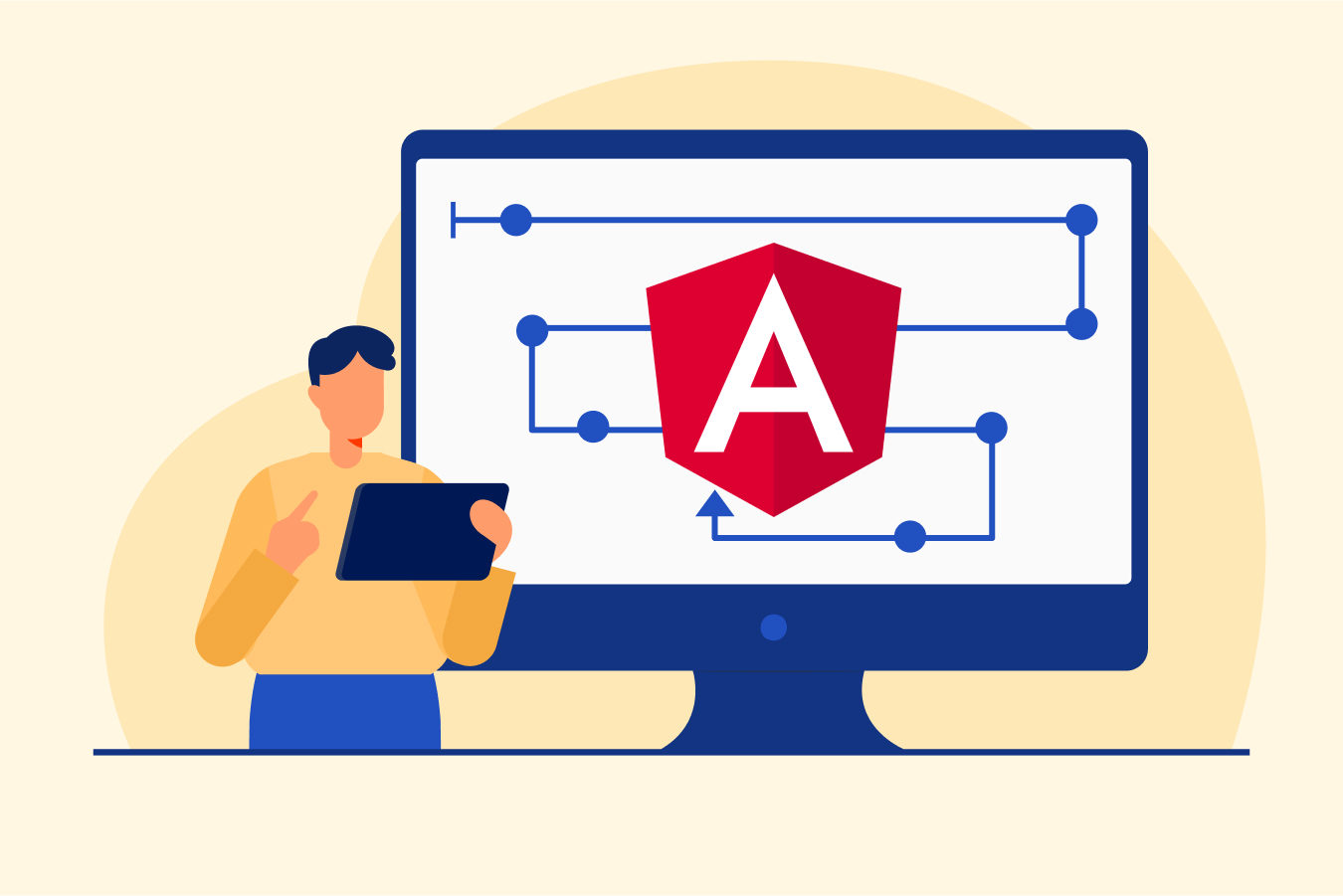React Roadmap to Follow in 2025
React or React.js is a JavaScript library created by Facebook in 2011. The tool is primarily used for developing user interfaces in web applications. Its popularity among developers can be attributed to its ability to reuse components and simplify application development. It is widely used by companies such as Instagram, Netflix, and Airbnb due to its ability to create fast, efficient, and scalable web applications.
Learning to work on the React tool is a useful skill if you want to pursue a career in web development. With our React roadmap guide, you can make your learning journey smooth and efficient.
React Roadmap: A Comprehensive Journey Map
The React roadmap will serve as an informative guide to learning concepts and tools. It will equip you with the basic framework to master React. Here are the key concepts and skills that you should learn.
1. Start with Programming Languages
Begin your React learning career roadmap by gaining proficiency in programming languages. If you are new to software development, master the following programming languages:
- JavaScript: JavaScript is a programming language that enables developers to add interactivity features to web pages. It is used behind the scenes for various web page functionalities, such as loading a webpage, displaying an animated image, or playing a slideshow.
- JSX: JSX is a syntax extension for JavaScript, used in React to write HTML and JavaScript together. It is a recommended syntax for React development, making it easier to create reusable UI components with fewer lines of code.
2. Know the Essential Concepts
Develop a strong grasp of the core concepts that are the building blocks of React.js, enabling you to develop dynamic and interactive user interfaces. By taking a full-stack development course, you can master advanced-level development concepts. It will enable you to use the React framework efficiently.
The following concepts are the foundation of the React developer roadmap:
- Components: React components are the building blocks of React applications. They allow the creation of reusable and independent user interface (UI) elements.
- Elements: These are the smallest building blocks of React. They represent a single object in the UI, such as a button or a text input.
- JSX: This is a syntax extension for JavaScript that allows for the creation of HTML-like elements in React code.
- Props: It is the short form for ‘properties’. It allows data to be passed from a parent component to a child component. By using props, you can easily share information and functionality between different parts of your application, making it more modular and reusable.
- State: It is a way to store and manage data within a React component that can change over time, such as user input or network responses.
- Conditional Rendering: It is the ability to render different UI elements based on certain conditions. It allows for dynamic and interactive user interfaces.
3. Acquire Knowledge of React Frameworks
The next step in the React.js roadmap is familiarizing yourself with React frameworks. React frameworks provide a set of pre-designed components, libraries, and additional elements that streamline the development process for web applications built with React. You can enroll in an online React course to learn about the frameworks.
Some of the benefits of using React frameworks are:
- It accelerates the web application development process.
- It supports a cohesive design, ensuring consistency across different platforms.
- It has a robust theming system, which enables seamless compatibility with various platforms.
- It can seamlessly integrate with other libraries, which enhances interoperability.
Here are some of the React frameworks you should learn.
- Next.js: This React framework is specifically designed for building server-rendered and statically-generated websites and applications. It offers features such as automatic code splitting, hot code reloading, and optimized prefetching.
- Gatsby.js: It is a static site generator built on React, known for its exceptional performance. It leverages GraphQL for data fetching and provides a comprehensive ecosystem of plugins to extend its functionality.
- Redux: It is a state management solution for JavaScript applications, particularly useful when working with React. The framework follows a unidirectional data flow pattern and promotes immutability, which ensures predictable state changes.
- React Router: It is a routing library designed for React applications. It enables seamless navigation and URL handling. The framework uses a component-based approach to define routes that allow for the dynamic rendering of components based on URL changes.
- Material-UI: This is a popular React UI component library, inspired by Google’s Material Design principles. It offers a wide range of pre-designed components and utilities that facilitate the creation of responsive and visually captivating user interfaces.
4. Understand the Significance of React Libraries
React libraries provide numerous functionalities and tools to improve the development of React applications. The features include deployment platforms, UI component libraries, and tools for data management and rendering, among others. They cover a wide range of aspects to enhance the development process.
Consider covering the following key libraries when you follow our React Native roadmap guide.
- Axios HTTP Library: It is a promise-based library for making HTTP requests. It offers features like request cancellation, interceptors, and automated data transformation.
- React Router Library for Routing: It is a routing library for React and helps manage navigation and URL routing within a React application.
- Form Handling Libraries: It is a group of libraries that simplify form handling in React, including Formik, Redux Form, and React Hook Form. They offer features like form validation, error handling, and form submission.
- React UI Component Library – Shadcn: It is a component library for React that provides pre-built and customizable UI components such as buttons, forms, and layouts.
- React UI Component Library – Keep React: It is another component library for React that offers a collection of reusable UI components like modals, tabs, and tooltips, focusing on accessibility and performance.
- Material UI: It is a prominent React component library adhering to Google’s Material Design principles, providing a user-friendly development experience.
5. Learn about the Core Hooks
React hooks are a recent addition to the React 16.8 version, which enables you to use React features without writing a class. A few key hooks in the React.js roadmap that you need to learn include:
- useState: useState is a React hook that enables you to manage state in functional components. When called, it returns an array with two elements. The first element is the current state value, and the second element is a function to update the state. This hook is useful when you need to change the state of a component in response to user interaction, such as clicking a button or filling out a form.
- useEffect: useEffect is another React hook that you can use to handle side effects in your components. Side effects include things like making API calls, setting up timers, subscribing to external events, or modifying the DOM (document object model).
- useContext: useContext is a hook that allows you to retrieve data from a context object in React. When you call useContext, it returns the current value of the context. This hook is useful when you have data that needs to be shared across multiple components.
- useRef: useRef is a hook that returns a mutable ref object. useRef is commonly used to access child components directly or to store a reference to a DOM element. This hook is useful when you need to keep track of a value that does not change often.
6. Enhance Your Skills with Projects
The last step in the React roadmap is implementing your conceptual knowledge in practice. Once you are done with thorough conceptual learning, begin working on React projects. Practicing projects is a useful tool for strengthening your knowledge, identifying skill gaps, and improving them. It will also enable you to master the skills effectively, build an impressive portfolio, and secure a promising job in the future.
Conclusion
The React roadmap equips you with all the essential steps for mastering the tool. Acquiring the skills mentioned in this blog can open doors to incredible job opportunities in the fields of web development, front-end development, and full-stack development. In addition to following this career roadmap for React, you can explore online communities and webinars, or read articles/periodicals offering information about the subject matter. Gaining proficiency in React tools can further boost your chances of securing a job and enhance your web development process.
Whether you are a beginner or a skilled professional, check out our blog on how to get an IT job and apply for the best opportunities.






